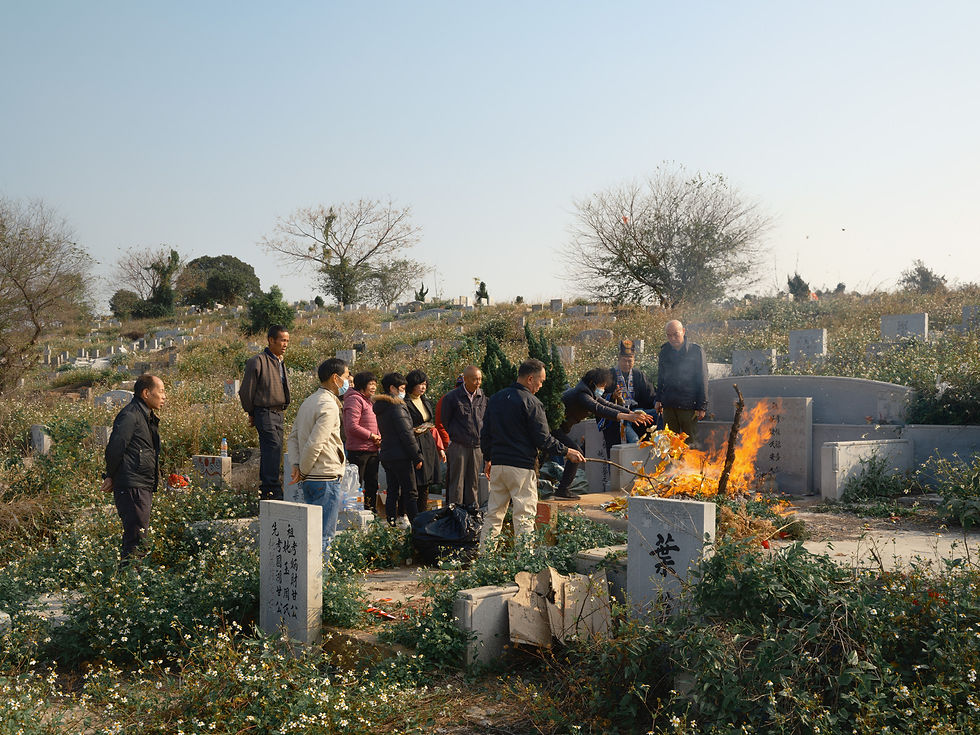TONY MAK


Every year in April, the uphill cemetery in this Cantonese small town turns into a misty wonderland. It is the day of Qing Ming, the tomb sweeping day. The idea of ‘tomb sweeping’ is to clean the tomb for the ancestors, to get rid of mud and weeds, and to repaint the washed-out names on stone tablets. Each family brings a roast pig onto the hill as an offering. After carefully lighting up the candles and incense, they tell the ancestors about their recent life, ask for their blessing and burn some fake paper money for them in the nether world. At the very end, they light up a long pile of firecrackers, covering the entire cemetery in smoke and ashes, the echoing sound of firecrackers can be heard from miles away.
It is a folk ritual in remembrance of the past of family and the local community. It is the belief that should anything interfere with the repose of the dead, misfortune will come to the living.























































After spending many years abroad, I returned to my Cantonese hometown for this photographic project and took a closer look into the rapidly modernising town and the disintegrating infrastructure of spiritual life for the Cantonese Chinese community. The history, the traditions, and the past were quickly abandoned. Temples were torn down, villages and old towns were abandoned for high-rise apartments, and fields and ponds were transformed into concrete forests. There was once a spiritual world full of magic, beyond life and death, in which we no longer believe. We may find ourselves drifting in rapidly changing life without understanding who we truly are, that’s our past, our ancestors, haunting us.
However, the ritual survives. Like many other young people, I once thought of such ancestor veneration ritual as superstition when I was a child. But now, it has become therapeutic and romantic. In a way, rituals help coordinate our collective memories, by establishing a shared system of symbols, a scripted play. It dispels our anxieties by forming a dialogue with the past, a conversation between the profane and the sacred, and reminds us of who we are.
